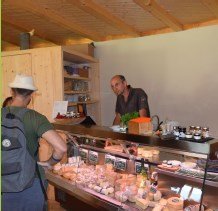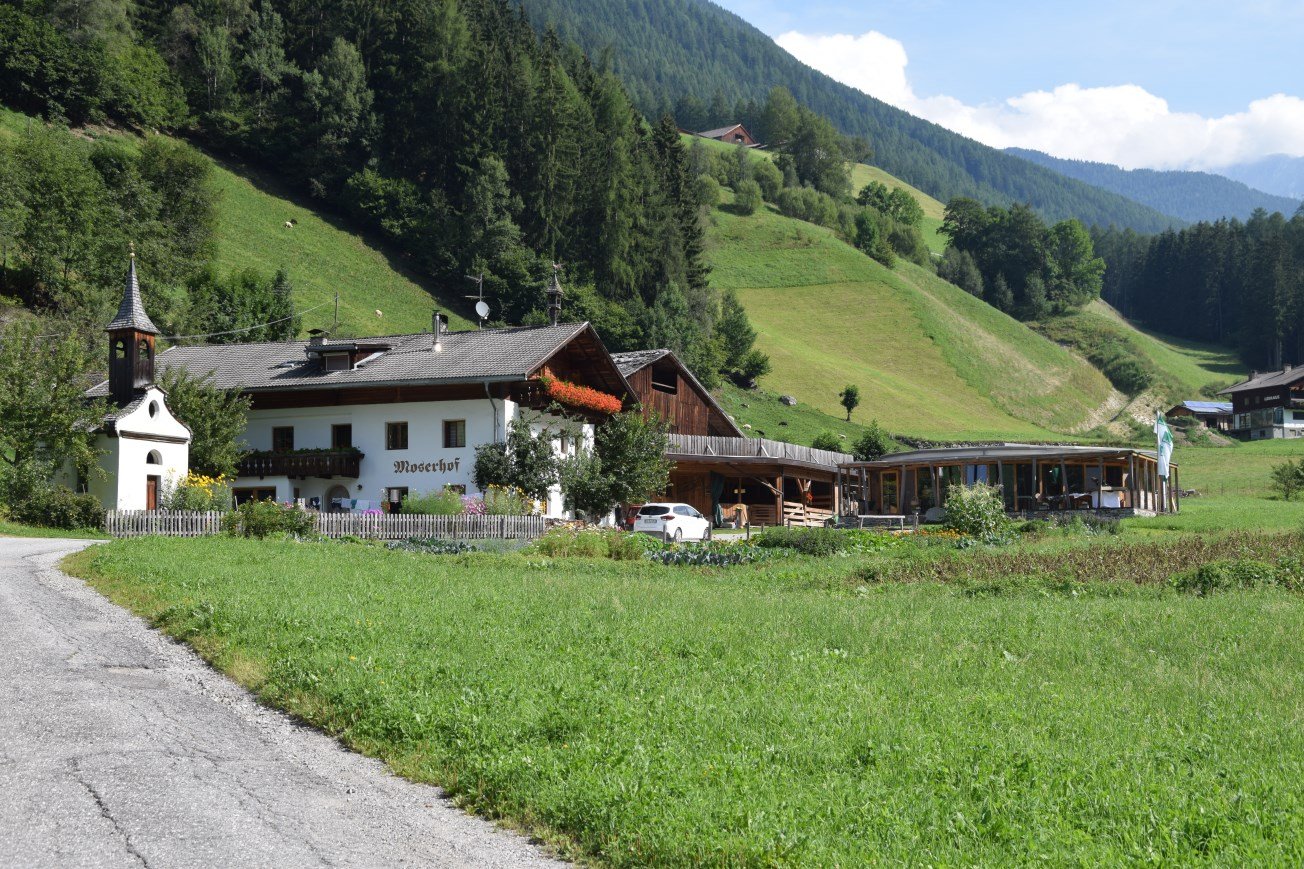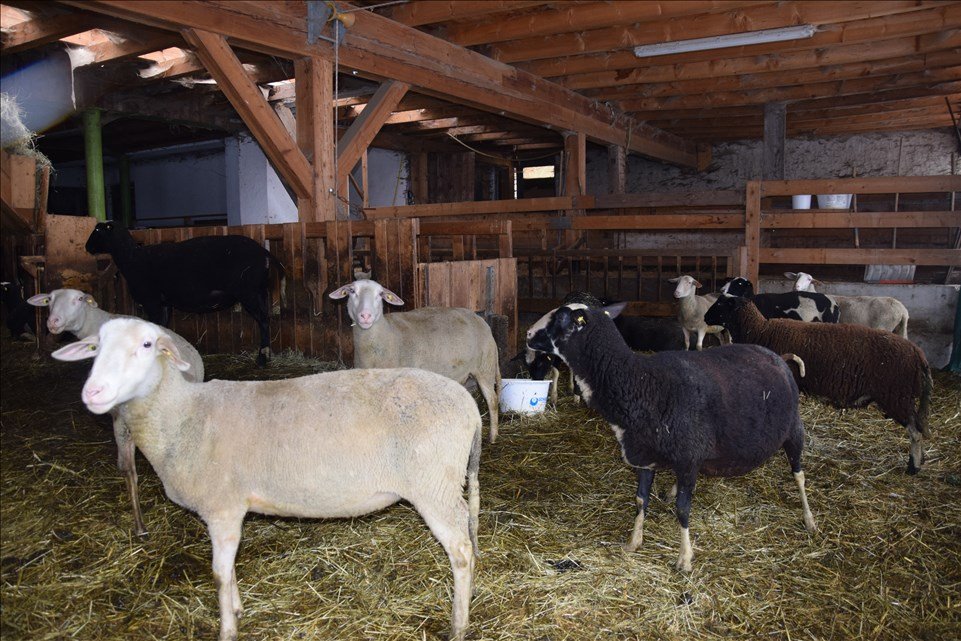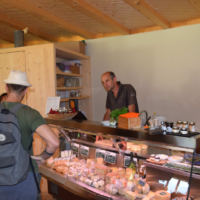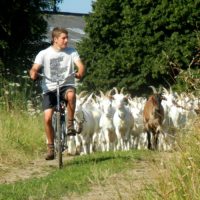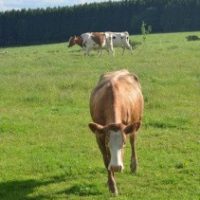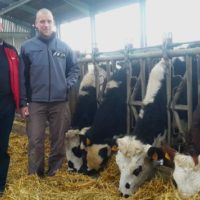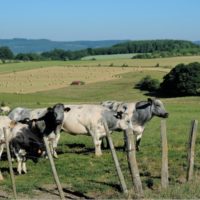Grazing management with dairy sheep in a mountain environment und regional marketing of products
Description
The innovation at a glance
Strengths
- Grazing significantly reduces the labour needed to manage the steep slopes as a meadow
- The cheese dairy and the restaurant create employment opportunities in the village
- Due to the location close to the road the farm is easily visible and accessible by customers; in addition, the vegetable field near the road and the grazing sheep represent a sort of advertising for the farm
- Professional marketing of regional, high-quality premium products
- Catchment area with a high tourism share
- Close cooperation with regional hotels and shops, as the farm provides a new touristic and gastronomic offer and thus represents an added value for the whole sector: The hotels take profit of regional products and of guided tours at the farm; the farm shop and the restaurant provide an experiential context for the fruition of the farm products
- The company has different mainstays (cheese dairy, farm shop, restaurant, vegetable and potato cultivation); this reduces the financial risk of the failure of a single innovation branch
- Well working cooperation with other farmers
Prerequisites/weaknesses
- Curiosity, courage to change and willingness to break new ground are necessary to always dare new innovations
- High workload and considerably complex organisation effort due to the diversification of the land use and agricultural production and to the activities related to marketing and gastronomy
- Family support and collaboration of the family members are necessary for the family business to work well
- The not strictly defined development concept of the farm, allowing the short-term introduction and integration of originally unplanned, new mainstays represents a certain entrepreneurial risk, for instance in view of the amortization of investments
- Openness, motivation, communication skills and a convincing personality of the manager are decisive for dealing with customers during farm tours, in the farm shop and in the restaurant
- Adequate availability of grazing areas close to the farm is necessary
- The landscape looks less tidy and regular to the local inhabitants in comparison to a meadow
- Few improvements to the working environment and infrastructures would be favourable: the kitchen is in a different building than the restaurant; the restaurant dining room and the farm shop share the same room, which leads to problems such as noise nuisance
A deeper insight
Economic factors
Prerequisites/weaknesses
- The workload is high due to the many different mainstays of the company
- The diversity of the company and the different mainstays make a simple, targeted marketing difficult, as it is often not easy for the customer to distinguish between the different mainstays such as the farm shop and the restaurant
- Investments must be well considered and not just impulsively made
- If the workspaces are not optimally designed, this results in unfavourable working routes (e.g. kitchen in another building than the restaurant dining room) or noise nuisance (farm shop and restaurant dining room share the same room)
- Organic farming implies more bureaucracy and controls
Strengths
- Grazing of the steep slopes has greatly reduced the labour required for forage production
- Many grazing fences are fixed; this reduces the effort for fencing
- The grazing animals and the vegetable field, well visible from the road, are an effective advertising element
- The seasonality of the animals with the beginning of the lamb season at the end of January makes it possible for the farming family to take time out and relax, especially in the touristic quieter month of January
- The restaurant and the cheese dairy create employment opportunities in the village
- Close cooperation with the region’s tourism sector, making it more valuable and attractive: Hotels offer farm products, and on the farm guided tours are offered, products are sold in the farm shop and high-quality, premium food is served in the restaurant; not only a product but also an experience is sold to the customer
- The regional, organic products can be offered at a high price, as more and more customers appreciate regionality and closed cycles
- Marketing via several channels reduces the risk of sales problems
- Membership of Roter Hahn (quality label of South Tyrol certifying authentic, agricultural, high-quality farm products and farm holidays) and Farm Holidays are advantageous, especially from an insurance point of view
Social factors
Prerequisites/weaknesses
- Family support is needed to manage entrepreneurial and agricultural tasks: leisure time is available occasionally, but free time shared by the whole family is often difficult to find
- Courage, openness, rhetorical skills and a convincing personality of the farmer are required for the guided tours, direct marketing and gastronomy to be able to answer adequately to the customers’ questions
- The acceptance by the family and the village for the changes made to the usual way of farming have to be won step by step
- In comparison to cattle, the local population has difficulties to perceive small animals such as sheep as “real” livestock
- Since the population does not really know the agricultural practice, normal situations can be misinterpreted, especially in times of social media, when e.g. there is a single limping sheep in the whole herd
Strengths
- The diversity of the farm is attractive, makes one curious and has a didactic function, as the sheep and lambs, pigs and piglets as well as the chickens are appreciated by both guests and local families with children
- Organic farming still has marketing potential and makes it possible to stand out from the crowd
- Regionality and closed cycles are becoming increasingly important both for tourists and locals; in the restaurant, customers find it very positive to have the vegetables and potatoes of the nearby fields right in front of their eyes
- Partially cross-farm, well-functioning, trust-based cooperation with other farmers
Environmental factors
Prerequisites/weaknesses
- Sheep and grazing management must be learned
- Areas close to the farm are an advantage for grazing
- Especially at the beginning of the conversion to grazing, a consequent reseeding of the meadows is necessary to promote the transformation of meadows into pastures with a dense sward
- The landscape is perceived by the local population as less beautiful due to the uneven grazing areas (dung patches) in comparison to a meadow
Strengths
- The reduced forage purchase (5,000 – 6,000 kg maize, lucerne, pelleted wheat bran per year) has a positive effect on the nutrient cycle of the farm
- On the farm, both the sheep’s milk and their meat are used and processed, resulting in a closed cycle
- The small amount of forage purchased, the low stocking rate of animals, the short transport distances and the absence of forage from overseas positively affect the CO2 balance
- The diversity of agricultural uses on the farm (arable fields, meadows, pastures, forest) and the numerous hedges increase the ecological diversity
Technological factors
Prerequisites/weaknesses
- Simple, cost-effective stall conversion
- Targeted and cost-efficient investments: Investments in farm equipment have been kept to a minimum. Only a few expensive investments such as the milking parlour and the cheese dairy were necessary
Legal factors
Strengths
- The possibility of cross-farm machinery use (Maschinenring) is useful to carry out certain field works cost-efficiently and to save working time
Political factors
Prerequisites/weaknesses
- Small cooperatives of local direct sellers would be advantageous for marketing
- Slaughtering is generally problematic and difficult, as there are only a few butchers and the transport routes (especially for organic farming) are often long; permission for on-farm slaughtering would be useful to keep transport distances short and to reduce stress for the animals
What the innovator says about his innovation
Would you do it again?
I would generally implement the innovation steps in the same way again and the conversion to sheep and grazing was definitely good.
What would you do differently?
I would take more time to plan the implementation of new ideas more thoroughly.
In addition, I had imagined certain aspects of regional marketing and the use of local products in trade and gastronomy to be easier than they are in reality.
Would there be enough market available in your village for three other farmers implementing your innovation?
Yes, I think that grazing with small ruminants on steep slopes could be easily implemented on other farms too, and that goats and sheep have potential, especially since sheep are not yet so widespread. Furthermore, keeping small ruminants in combination with a deep litter-loose housing can avoid the conflict between the spreading of slurry and the resulting odor nuisance, which collides with the interests of tourism.
I believe that there is still a market for other cheese producers, but this implies a certain effort to establish the own products on the market. However, cooperative collaboration and a certain diversity of products and diversification of farms would make many things possible. In tourism, more could and should be organized collectively.
Additional information
| Farming system | organic farming |
|---|---|
| Domains of innovation | grazing management system, marketing, product processing |
| Main types of animal | dairy sheep |
| Country | Italy |
| Product type | Innovation analysis |
| Language | English, German |

